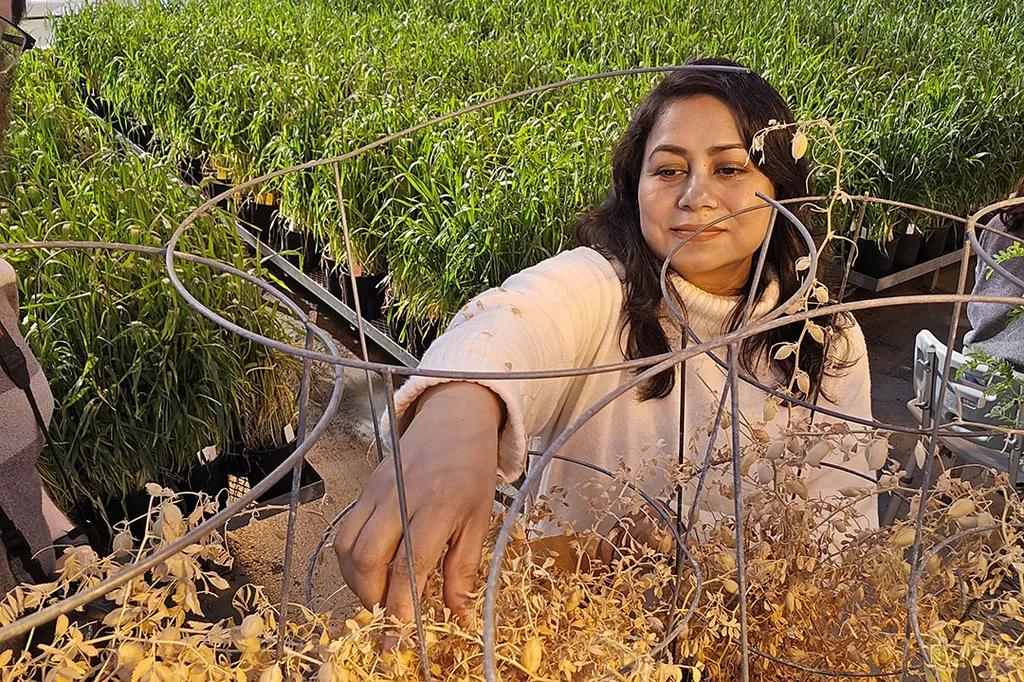In the heart of Turkey, researchers are unlocking the secrets of chickpea resilience, and their findings could revolutionize agriculture and potentially impact the energy sector. Melike Bakır, a scientist at Erciyes University’s Department of Agricultural Biotechnology, has led a groundbreaking study that delves into the molecular mechanisms behind freezing stress responses in chickpea plants. The research, published in *Scientific Reports* (translated as “Scientific Reports”), offers a promising path towards developing more robust crops that can withstand harsh weather conditions.
Chickpea, a vital food legume, faces significant productivity challenges due to low-temperature stress. This is particularly problematic during autumn and winter sowing, as well as during sudden temperature fluctuations in late spring. While wild relatives of chickpea exhibit enhanced cold tolerance, their molecular responses to freezing stress have remained a mystery—until now.
Bakır and her team compared cold-tolerant and cold-sensitive cultivated chickpea genotypes with three wild relatives: Cicer bijugum, Cicer reticulatum, and Cicer echinospermum. Using advanced RNA sequencing techniques, they generated a staggering 1.38 billion raw reads, assembling 181,756 transcripts and 56,556 unigenes. This massive dataset allowed them to identify between 9,921 and 11,149 differentially expressed genes (DEGs) per genotype under freezing stress.
“Our study provides a comprehensive overview of the molecular mechanisms underlying freezing tolerance in chickpea,” Bakır explained. “By understanding these processes, we can develop strategies to enhance the cold tolerance of cultivated chickpea varieties, ultimately improving their productivity and resilience.”
The research revealed that wild Cicer species exhibit a broader and more dynamic transcriptional response to freezing stress. Key calcium signaling components, such as glutamate receptor-like channels, calmodulin-like proteins, CBL-CIPK modules, and calcium-dependent protein kinases, were activated. Additionally, MAPK cascades and genes in the ICE-CBF-COR pathway played crucial roles in the plants’ defense mechanisms.
Among the wild species, Cicer bijugum stood out, exhibiting the highest number of species-specific DEGs and transcription factors (TFs). This suggests a distinct and potentially powerful cold adaptation strategy. “The unique genetic makeup of Cicer bijugum could hold the key to developing super-resistant chickpea varieties,” Bakır noted.
The study also identified 8,659 simple sequence repeats (SSRs) and 232,271 single nucleotide polymorphisms (SNPs), with a subset validated as polymorphic markers. These genetic resources are invaluable for breeding programs aimed at creating freezing-tolerant chickpea varieties.
The implications of this research extend beyond agriculture. As the global population grows and climate change intensifies, the demand for resilient crops that can thrive in adverse conditions will only increase. By enhancing the cold tolerance of chickpea, we can secure food supplies and potentially reduce the need for energy-intensive greenhouse farming.
Moreover, the genetic insights gained from this study could have broader applications in the energy sector. For instance, understanding the molecular mechanisms of cold tolerance in plants could lead to the development of bioenergy crops that can grow in colder climates, reducing the reliance on fossil fuels.
As Bakır and her team continue to unravel the complexities of plant resilience, their work serves as a beacon of hope for a more sustainable and food-secure future. The study not only advances our understanding of chickpea biology but also paves the way for innovative solutions to global challenges.

